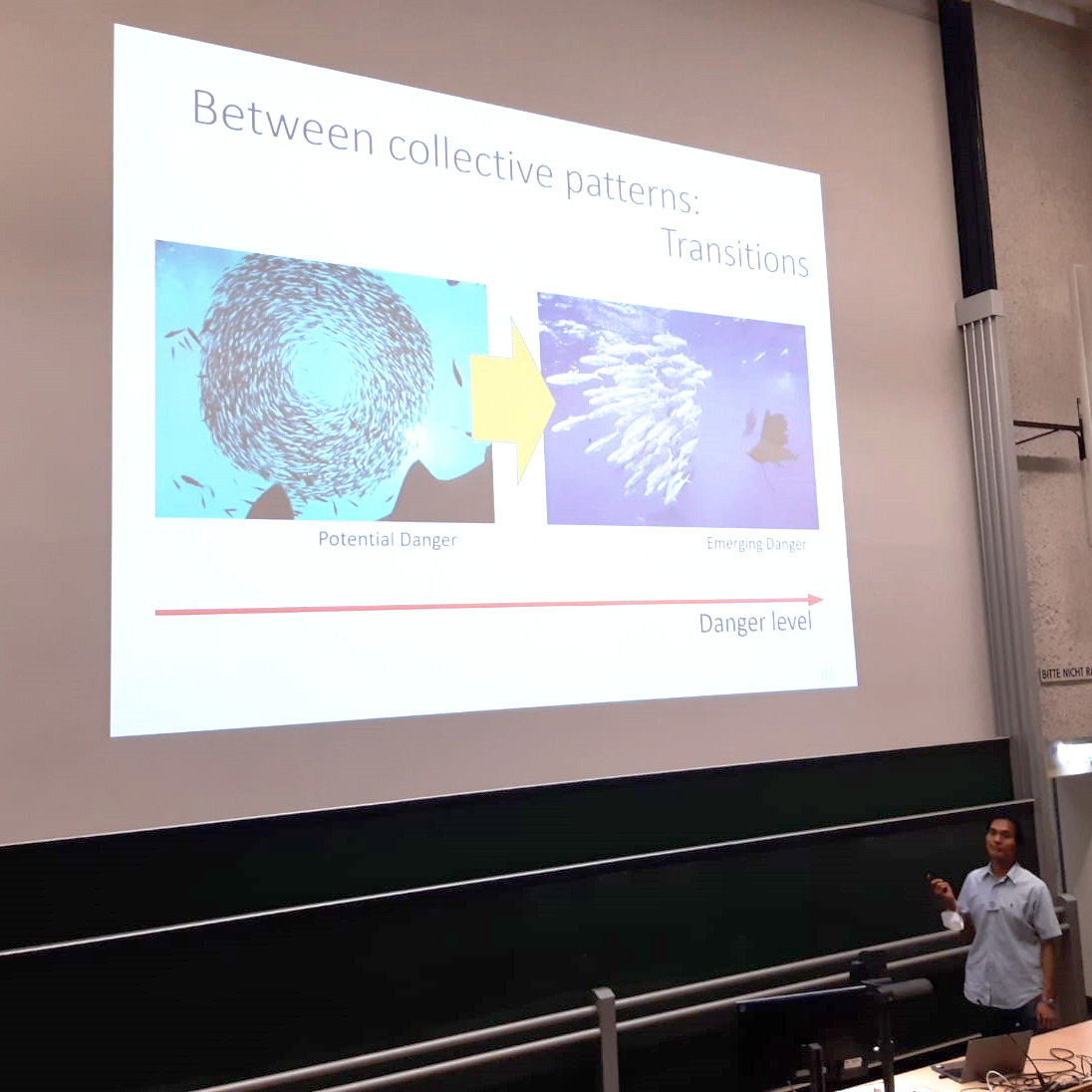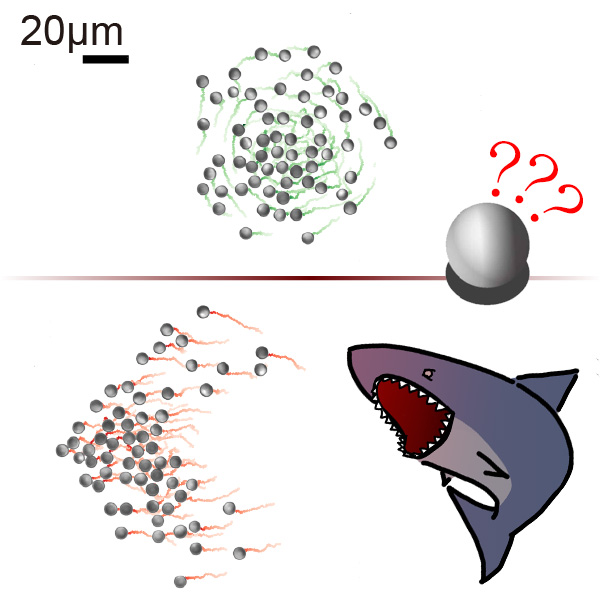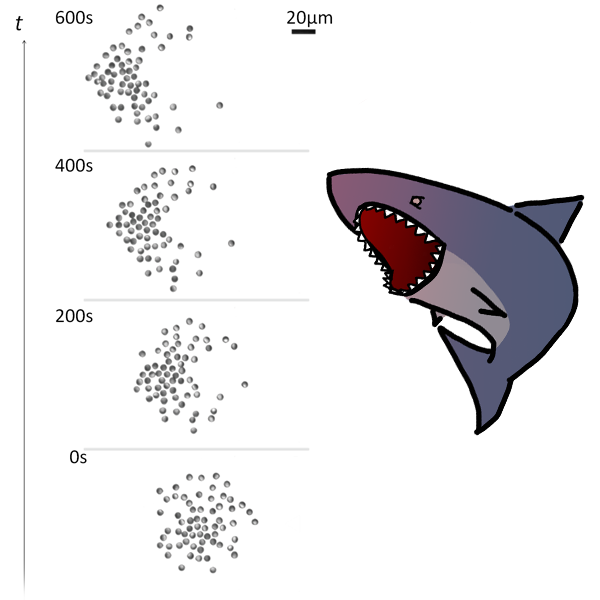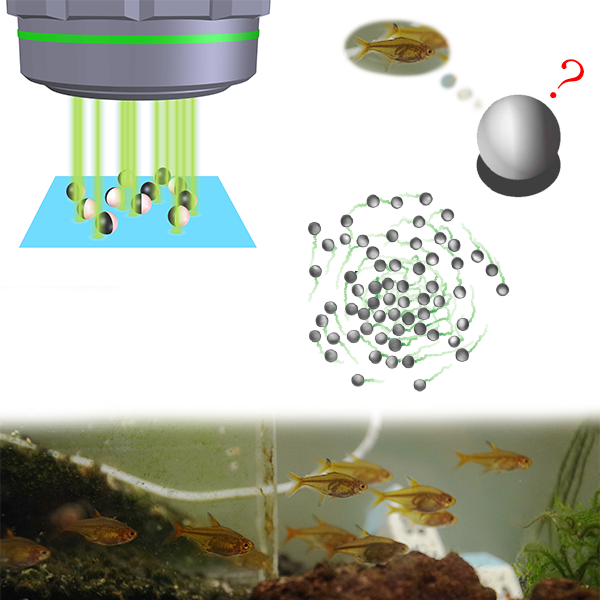
You can find out more detail about the presented work as the contents of this talk was based on Chun-Jen and Clemens Bechinger’s publication at New J. Phys. 24 033001 (2022).

You can find out more detail about the presented work as the contents of this talk was based on Chun-Jen and Clemens Bechinger’s publication at New J. Phys. 24 033001 (2022).

Chun-Jen Chen and Clemens Bechinger
New J. Phys. 24 033001 (2022)
doi: 10.1088/1367-2630/ac5374
repository: KOPS:56911
Many animal species organize within groups to achieve advantages compared to being isolated. Such advantages can be found e.g. in collective responses which are less prone to individual failures or noise and thus provide better group performance. Inspired by social animals, here we demonstrate with a swarm of microrobots made from programmable active colloidal particles (APs) that their escape from a hazardous area can originate from a cooperative group formation. As a consequence, the escape efficiency remains almost unchanged even when half of the APs are not responding to the threat. Our results not only confirm that incomplete or missing individual information in robotic swarms can be compensated by other group members but also suggest strategies to increase the responsiveness and fault-tolerance of robotic swarms when performing tasks in complex environments.
Press release at Universität Konstanz website:
How animal swarms respond to threats: With the help of microrobots, Konstanz physicists decode how swarms of animals respond effectively to danger [in English]


The school was focused on three main topics: Swimming into complex environment – micro-swimming, Collective motion, and Machine learning applied to active particles, and covered a wide range of models regarding chemical and biological microswimmers.
The school was organised in lecture sections and project sessions for participants to collaborate in groups, in which PhD students and post-doctoral researchers could develop a research project in one of the three main topics of the school. Chun-Jen was involved in a simulation project on a Vicsek-like model in complex environment which is still ongoing.

As our first event with full participation of both PIs and ESRs took place on the 10th of September 2020, all ESRs had a chance to introduce their PhD projects, and benefit from the collective discussion and feedback from the other members of the network.
Chun-Jen Chen (UKONS) briefly explained the Active Brownian Colloidal (ABC) system with real-time controls to displacements and orientations of each individual ABC particles. He further demonstrated the application of such ABC system in the investigation of spontaneous collective behaviours of living systems (also more detail here by UKONS), and how he would extend the study to higher non-equilibrium and more stimulus-interactive cases, e.g. collective prey-predator interactions.
Chun-Jen presentation is published along with all other ESR presentations on the network’s Youtube channel. You can also read about the meeting and get the full list of ESR presentation videos in the Event post.